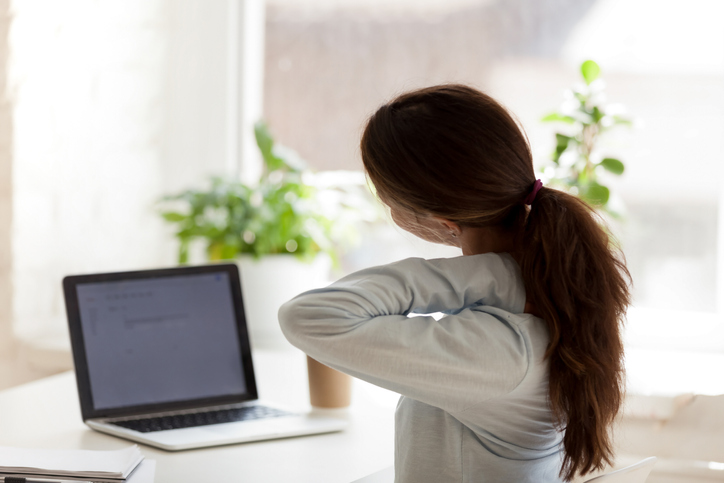The COVID-19 pandemic has caused a significant shift in the work setup of millions of employees, and for many, these changes appear to be around for good. According to Statistics Canada, the number of Canadians working remotely across all sectors rose from 10% in 2018 to 40% in 2020, when the COVID-19 pandemic took hold (Macleod, 2020). As more and more companies shift to remote working arrangements, professionals today are forced to adjust to a new daily reality.
While many have praised the newfound freedoms of remote work, certain challenges are slowly coming to the forefront as we gain awareness of how remote work affects employee wellbeing. As a counsellor therapist, it is important to keep these effects in mind as you work with clients to help them adjust to a new routine in the aftermath of the pandemic. Below, learn about some of the biggest challenges facing remote employees today.
The Effects of Isolation
Social distancing mandates during the pandemic have brought to light the effects of isolation on mental health (Pietrabissa, 2020). Remote work set-ups have limited social interactions even further.
For a long time, psychologists have highlighted the value of our extended networks, or “weak ties,” in providing a sense of community. Research suggests that interactions with peripheral members of our social network—including work colleagues or acquaintances—contribute to our emotional and social well-being (Sandstrom, 2014). Since the advent of the work-from-home culture, our opportunities to interact with that portion of our social networks have been severely limited. Not to mention, our time working from home has extended beyond the initial stages of the pandemic and has now become a feature of working life for many people across the world.
A study conducted in 2019 found that loneliness was the second biggest struggle people faced when working remotely. While working in a counsellor therapist career, it is important to take note of the growing prevalence of isolation among workers today as you help clients navigate the challenges of modern life.

Pay attention to clients who experience loneliness from remote work in your counsellor therapist career
The Impact of Remote Work on Physical Health
As mental health awareness grows, people are coming to terms with the link between mental health and physical health (Ohrnbeger, 2017). The physical effects of remote work stem from the significant decline in mobility for employees, who no longer commute to work and spend more time indoors (Robinson, 2021). In a recent survey of remote and hybrid workers, over half of the participants estimated that they’d reduced their mobility during work hours by 50%.
Given the positive link between physical exercise and mental health, it is no surprise that the mental health of remote workers who have cut back on physical activity in their daily routine is at risk (Petrabissa, 2021). During counsellor therapist training at Rhodes Wellness College, you’ll take a holistic approach to helping clients by offering extensive physical, mental, emotional, and spiritual wellness services. By understanding the link between physical and mental health, you can identify ways to support the overall well-being of your clients.
How You Can Support the Mental Health of Clients in Your Counsellor Therapist Career
After earning your professional counsellor diploma, you may work with clients who are grappling with the realities of remote work. You should aim to understand their routine, the challenges they face and the changes they are hoping to make. In the process, you can offer proactive solutions to improve their well-being in both their professional and personal lives.
One of the best ways to offset the burnout effects of remote work is to establish a routine (Kratz, 2022). With a good routine, workers can take time for mental breaks and exercise while balancing their work and social activities for a more well-rounded life. Similarly, you can encourage clients to separate their workspace from their personal living space. That way, they can make sure that their home remains a place for recharging and relaxation after the workday. By understanding the common challenges facing remote workers today, you can help clients identify areas in which they can make adjustments to support their mental health.
Are you looking to take the registered professional counsellor training?
Contact Rhodes Wellness College for more information.
Works Cited:
Kratz, G. (2022). How to Structure Your Day When Working from Home. Flexjobs. Retrieved Feb 23, 2022, from https://www.flexjobs.com/blog/post/how-to-structure-your-day-when-working-from-home/
Macleod, M. (2020). Is the great shift to working from home here to stay? CTV News. Retrieved Feb 23, 2022, from https://www.ctvnews.ca/health/coronavirus/is-the-great-shift-to-working-from-home-here-to-stay-1.4981456
Ohrnberger, J., Fichera, E., & Sutton, M. (2017). The relationship between physical and mental health: A mediation analysis. ScienceDirect. Retrieved Feb 23, 2022, from https://www.sciencedirect.com/science/article/pii/S0277953617306639
Pietrabissa, G. & Simpson, S. (2020). Psychological Consequences of Social Isolation During COVID-19 Outbreak. Frontiers in Psychology. Retrieved Feb 23, 2022, from https://www.frontiersin.org/articles/10.3389/fpsyg.2020.02201/full#:~:text=Social%20isolation%20has%20been%20linked,et%20al.%2C%202011).
Robinson, B. (2021). New Research Shows Remote And Hybrid Workers Suffering Physical And Mental Health Dilemmas. Forbes. Retrieved Feb 23, 2022, from https://www.forbes.com/sites/bryanrobinson/2021/11/01/new-research-shows-remote-and-hybrid-workers-suffering-physical-and-mental-health-dilemmas/?sh=49e1270e5aa9
Sandstrom, G. & Dunn, E. (2014). Social Interactions and Well-Being: The Surprising Power of Weak Ties. Sage Journals. Retrieved Feb 23, 2022, from https://journals.sagepub.com/doi/abs/10.1177/0146167214529799










